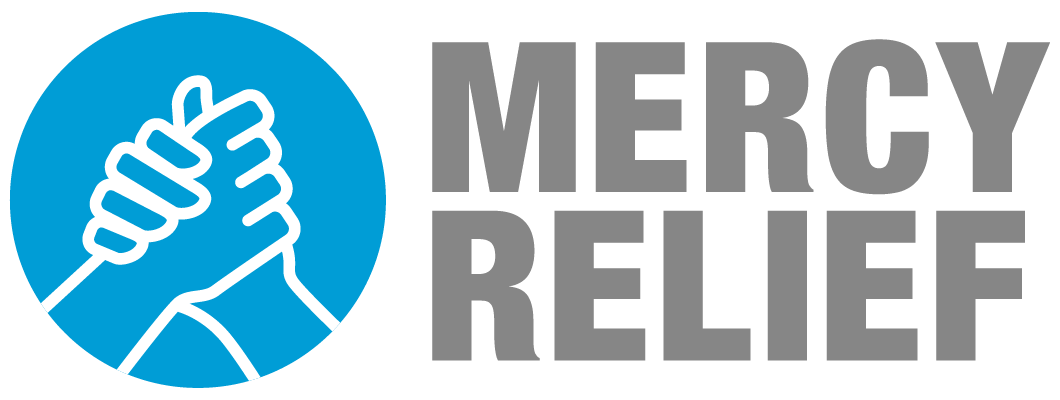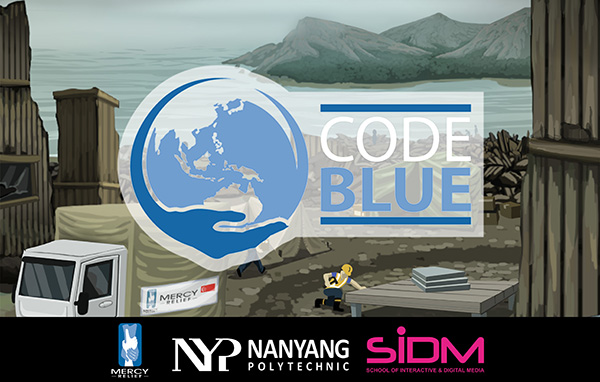Mercy Relief (MR), in collaboration with Nanyang Polytechnic’s School of Interactive & Digital Media (SIDM), launches Code Blue, an educational computer game bringing to the digital platform the humanitarian disaster relief mission.
Developed by ten final year students of SIDM in 2014, Code Blue falls within MR’s ongoing collaboration with local institutions to raise awareness about the increasing humanitarian needs in the Asia-Pacific Region. The game is the second such collaboration between SIDM and the Singaporean NGO, the first being a series of five games, entitled Little Mercy, launched in 2012 and targeted at children between the ages of five to twelve.
Code Blue is an evolution from Little Mercy. The game is a platform to engage and educate youths aged 13 and above on the operations of humanitarian relief. It uses a multimedia approach that incorporates images, animation and text. The game took nine months in the making, during which the lecturers leading the project and the students involved worked in close contact with MR to design and develop a strong content based on character development and plot creation relevant to MR’s relief missions.
As ‘humanitarian workers’, players will have to manage a tight budget and ‘purchase’ units of immediate survival-needs. To attain high scores, they must allocate resources effectively to meet the needs of disaster victims.
Code Blue was launched on 13 February 2015 at Anglican High School. A group of 40 students, Character and Citizenship Education (CCE) Ambassadors of Anglican High School, were the first group of youths from the general public to explore a disaster relief mission via a computer game. Anglican High School is also MR’s long-time partner and participating school for its local community engagement programmes.
MR’s Chief Executive, Goh Chin Siang, elaborates on the importance of the game, “Code Blue exposes young people to humanitarianism via the digital gaming platform, a medium today’s youth master. Our partner SIDM have designed the game to fuel players’ curiosity. The content, specific to our mission of providing timely and effective relief, and empowering communities in Asia, is opening young dynamic minds and cultivating their engagement to humanitarianism.”
View photos of the launch event here.
Daniel Tan, Director of SIDM, explains the partnership between the Singaporean charity organization and SIDM, “Mercy Relief has been a longtime partner of Nanyang Polytechnic and we are pleased to partner them in their recent public education efforts. Working on Code Blue, an interactive 3D game project, has enabled our students to learn two key lessons. Firstly, the students have the opportunity to learn about the challenges faced by international rescue workers during a disaster and their role in a rescue operation. Secondly, the students now know that they are able to use their creativity and games creation skills to better contribute to the good of the community. We hope that Code Blue will generate similar lessons and inspire those who would play the game too.”
Mercy Relief conducts regular school talks and workshops in Singapore. The local year-long programmes aim to cultivate a grateful and gracious spirit. The launch of Code Blue at Anglican High is the first in a series of workshops and activities planned for 2015 with secondary schools in Singapore.
To discover and explore Code Blue, you can play it here.
For informational video about Code Blue, watch it here
CODE BLUE: Features, Advantages, Benefits
Designed as an interactive educational tool, Code Blue has four levels of difficulty. The basic mission is to aid disaster victims by providing enough crucial resources (Shelter, Water, Sanitation and Food) for everyone at an evacuation camp. Along the game, the different stages in a humanitarian relief mission will manifest. Each of the four levels present a situation more complex than the last. For example, in Level 1, gamers’ mission is to help victims of a typhoon-stricken community. By level 4, gamers will have to manage injured victims, clearing debris, making decisions as to which structures are safe to use as shelters, and engage a team of people who may be able to assist with immediate needs, all with the budget that is allocated to them. A brief pre-game tutorial will assist the gamers with understanding the importance of each element they are provided with, such as medical workers, engineers and tools.
Credits
Producers: Ikka Vallo, Michael Kitola
Programmers: Brandon Ngui Ming Chen, Dino Teo Yi Xiang, Liu Chang Yen
Graphics Artists: Chew Qing Jie (3D), Laura Oravakangas (2D, 3D), Leo Bauchy (2D),
Wesley Tian Li Wei (2D/3D), Siau Jun Lin (3D)
Lecturers: Stanley Haryoto, Chua Bee Luan
ABOUT NANYANG POLYTECHNIC
Established in 1992, Nanyang Polytechnic (NYP) is a premier tertiary institution that offers quality education in Engineering, Information Technology, Design, Interactive & Digital Media, Chemical & Life Sciences, Business Management and Health Sciences. It offers 50 full-time diploma courses and a suite of post-diploma and customised courses for continuing education.
The Polytechnic’s industry-relevant and real world-based training equips students to become employment-ready upon graduation. It aims to nurture students into innovative and enterprising individuals, capable of succeeding in any path they choose to take, be it a career or in further studies.
Nanyang Polytechnic is also the proud recipient of the prestigious Singapore Quality Award, the Innovation Excellence Award and the People Excellence Award. This makes NYP the first education institution in Singapore to receive these three top organisational and business excellence awards.
About Mercy Relief
Mercy Relief is a Singaporean humanitarian organisation which engages in both disaster relief and sustainable development programmes. It was established in 2003 as an independent non-governmental humanitarian charity responding to the human tragedies in Asia. Mercy Relief’s aid programme focuses on providing timely and effective assistance to disaster-stricken communities and has maintained the delivery of emergency aid within 72 hours from the point of appeal for assistance.
In the past 12 years, Mercy Relief has disbursed over S$32 million in aid across 40 disaster relief and 53 sustainable development initiatives. Mercy Relief has impacted an aggregate of 2 million lives in 24 countries and areas, namely Afghanistan, Bangladesh, Cambodia, China, DPR Korea, India, Indonesia, Iran, Iraq, Japan, Laos, Lebanon, Malaysia, the Maldives, Myanmar, Nepal, Pakistan, Palestine, the Philippines, Sri Lanka, Taiwan, Thailand, Vietnam and Yemen.
For more information, you may call us at 6514 6322 or email corporateaffairs@mercyrelief.org


